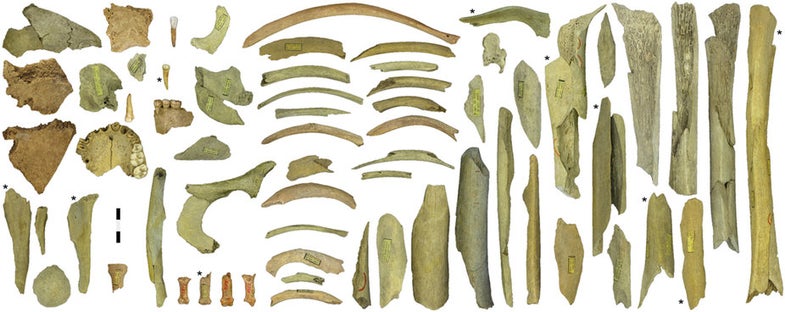More Evidence That Neanderthals May Have Had Some Cannibalistic Tendencies
Belgian cave holds remains of cut leg bones

Neanderthals ate a lot of reindeer and horse, but that may also have come with a side of hominid. Paleoanthropologists uncovering remains in Goyet, Belgium have found evidence of butchery on Neanderthal remains, suggesting the bones were intentionally cut by their own kind.
While there is a small chance that these marks could have come from natural causes, like bears or other predators, or been part of some unknown burial ritual, the researchers believe that this is strong evidence of cannibalism among late period Neanderthals.
The cut marks on the bone fragments are reminiscent of marks on game, like the four-legged creatures they liked to eat. A few bones had marks that may or may not be chew marks.
Along with the cut marks, most of the bone fragments are from the tibia and femur bones, which are higher in meat and marrow content. The researchers hypothesize that the Neanderthals, which were carbon dated to around 40,000 BCE, carried their quarry into the cave to have their meal.
Some bones had also been used as tools to retouch stone, specifically flint, which is very common in the area. This was often done with animal bones to create stone tools and they carry the same markings.
“That Neanderthal bones were used for this purpose–that’s something we had seen at very few sites, and nowhere as frequently as in Goyet,” Hervé Bocherens, a researcher on the team from Tübingen University in Germany, said in a statement.
Other possible evidence of cannibalism among Neanderthals had previously been found in Spain and France, but this is the first find for Northern Europe.